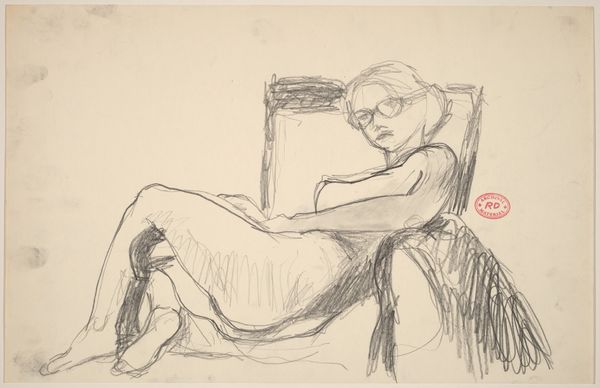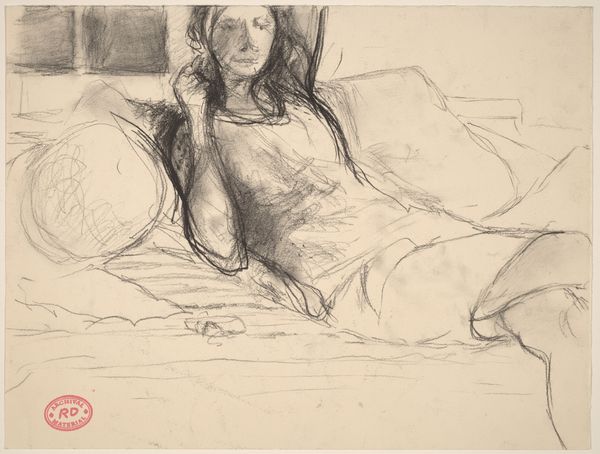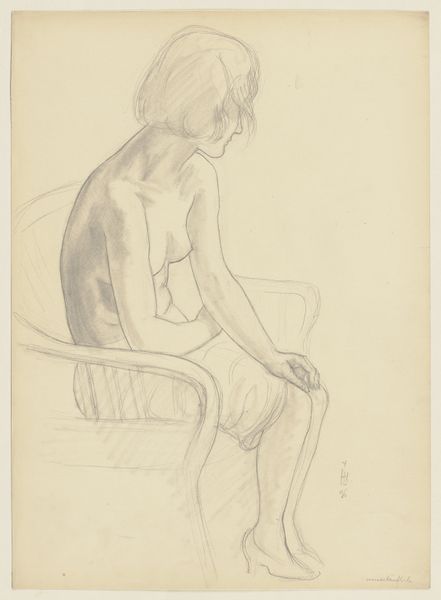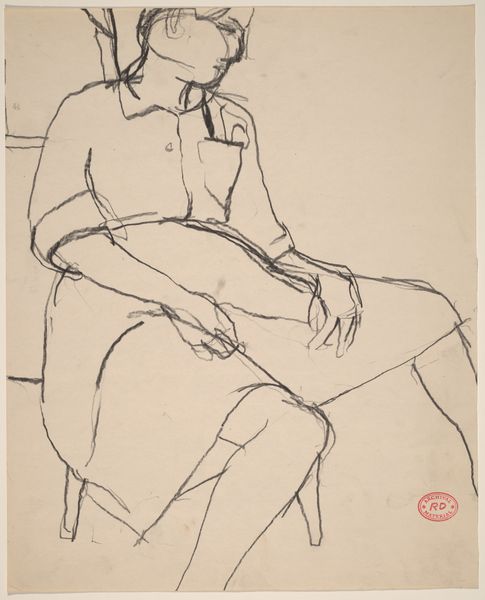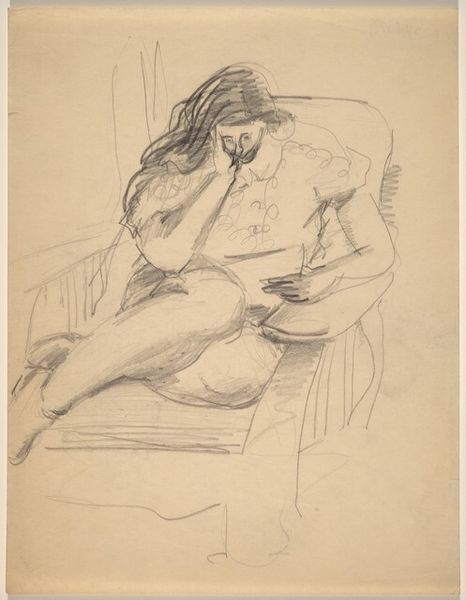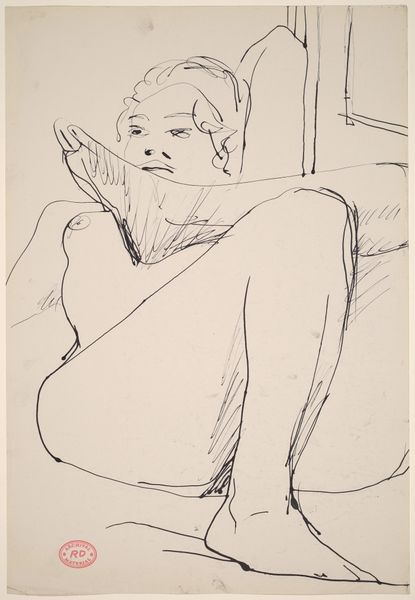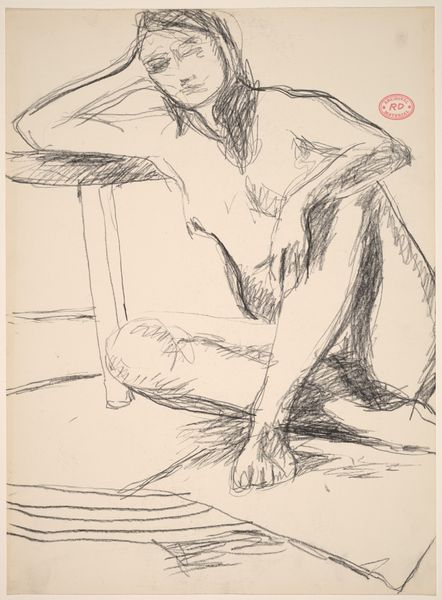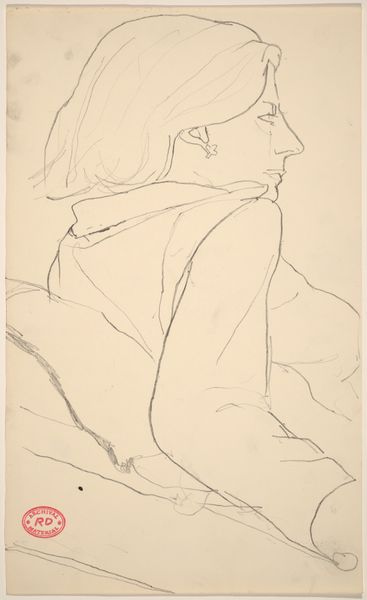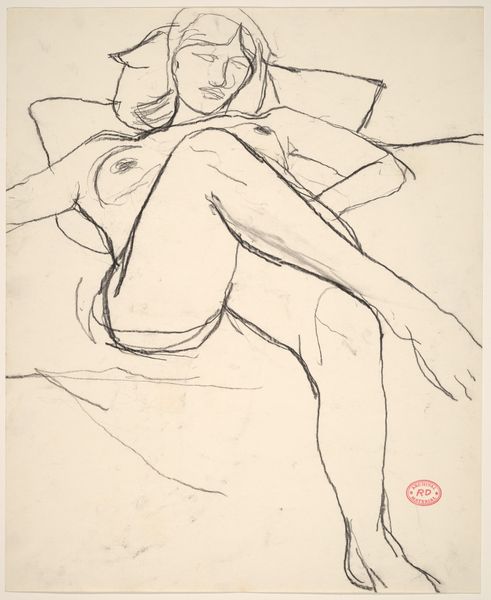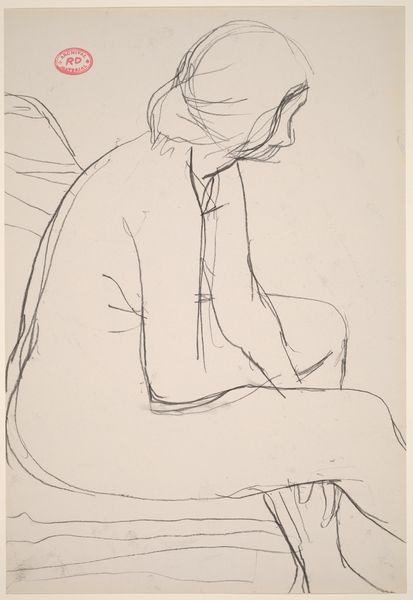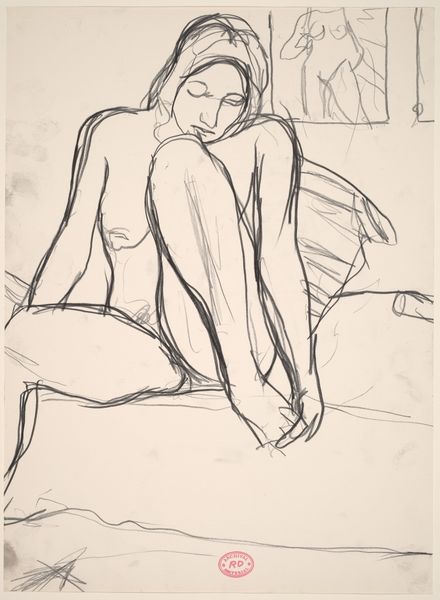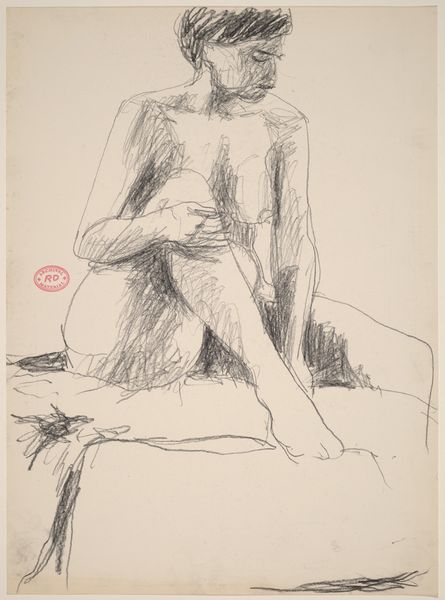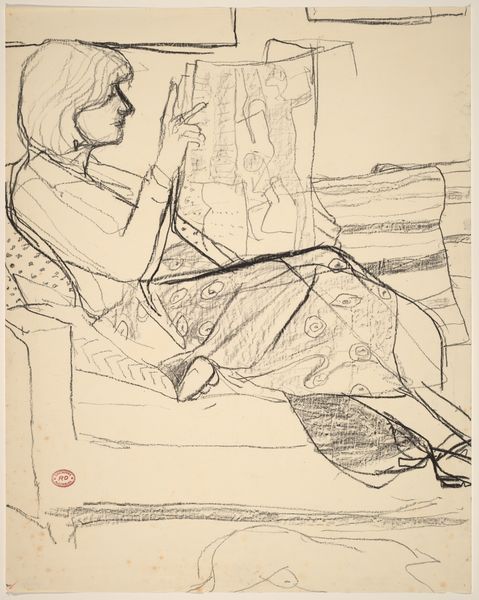![Untitled [female nude seated in the studio] by Richard Diebenkorn](/_next/image?url=https%3A%2F%2Fd2w8kbdekdi1gv.cloudfront.net%2FeyJidWNrZXQiOiAiYXJ0ZXJhLWltYWdlcy1idWNrZXQiLCAia2V5IjogImFydHdvcmtzLzM0YjU3ZWE0LWRhNGEtNDBkNy1hY2U0LWI0NDEwZDI3Y2M0ZS8zNGI1N2VhNC1kYTRhLTQwZDctYWNlNC1iNDQxMGQyN2NjNGVfZnVsbC5qcGciLCAiZWRpdHMiOiB7InJlc2l6ZSI6IHsid2lkdGgiOiAxOTIwLCAiaGVpZ2h0IjogMTkyMCwgImZpdCI6ICJpbnNpZGUifX19&w=3840&q=75)
drawing, pencil
#
portrait
#
drawing
#
figuration
#
bay-area-figurative-movement
#
pencil
#
line
#
nude
Dimensions: overall: 43.2 x 35.6 cm (17 x 14 in.)
Copyright: National Gallery of Art: CC0 1.0
Editor: Here we have Richard Diebenkorn’s “Untitled [female nude seated in the studio],” created sometime between 1955 and 1967, using pencil. It’s so raw and unfinished. I find it kind of… vulnerable? What's your take? Curator: Well, let's consider Diebenkorn's position within the California art scene of the mid-20th century. He moves from abstract expressionism to figurative work, against the grain. Nudes, traditionally symbols of power and often male gaze objects, undergo a subtle shift. Think about whose gaze is validated by art institutions then. This sketch, quickly rendered as it is, seems more interested in the geometry of the body in space than idealizing the figure. Does it strike you as objectifying? Editor: No, definitely not. I think the sketch-like quality helps with that. It feels… private, almost like we’re not supposed to be looking, which, given its historical context, is pretty interesting, right? Like he's removing it from the typical display. Curator: Precisely! And who decided what was seen or not seen in public gallery spaces? Who controlled these outlets, whose values dominated, whose bodies, indeed, became artistic subject matter? These images operate within complex frameworks. Do you notice anything interesting about the implied setting? Editor: I do, yes. It’s in a studio, right? It makes it about the process of artmaking itself. Curator: Yes. Diebenkorn makes a very knowing mark here; how should society represent bodies, and how can it become the focus and concern of both artist and institution, not simply for art's sake, but in service of progress? It’s not just a nude; it’s a statement, even in its unfinished state. Editor: Wow, I didn’t think about all those layers when I first saw it, but that reframing is incredibly powerful. Curator: That's the beauty of art history. We see beyond the surface, question established norms, and hopefully, move forward.
Comments
No comments
Be the first to comment and join the conversation on the ultimate creative platform.
